+495% Revenue for Armstrong Supplies
The Client 🔍
Armstrong Supplies is an online-only store for buying building materials, supplies, and equipment in the UK.
The Objective 🏆
Compete against the biggest brands for B2B and B2C organic searches and drive significant revenue growth.
The Competition 🔥
Building Supplies Online 😊
Building Materials 😊
Roofing Superstore 😬
Start Point
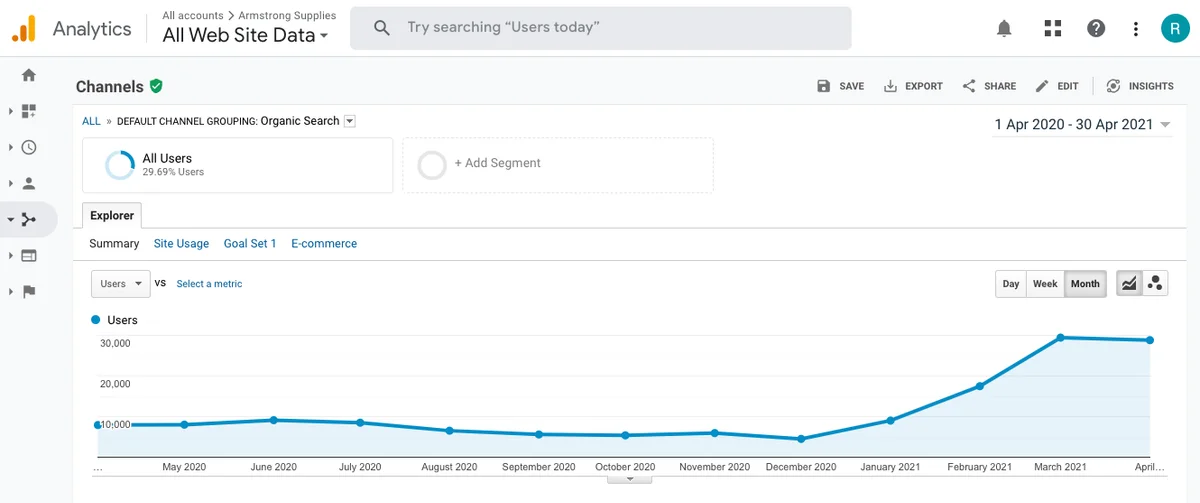
Results
+24,318
Users
+495.42%
Website Revenue
+332.43%
Transactions
+737.50%
Assisted Conversions
+193
Top 3 Keywords
+589
Page 1 Keywords
How do you drive traffic to a Shopify store with over 2,300 products competing against brands like Wickes, Travis Perkins and Jewson?
The LOGEIX Playbook
No two projects are the same, but the high level strategy never changes. Here are the 3 steps we use every time to multiply our clients organic revenue, along with the specific tactics we used for this client campaign.
1. Improve Site Quality
The most impactful improvements are often ones that impact many, or all, pages on a website. This mostly comes down to technical issues, along with page structure and onpage.
One of the simplest to fix was internal linking to products:
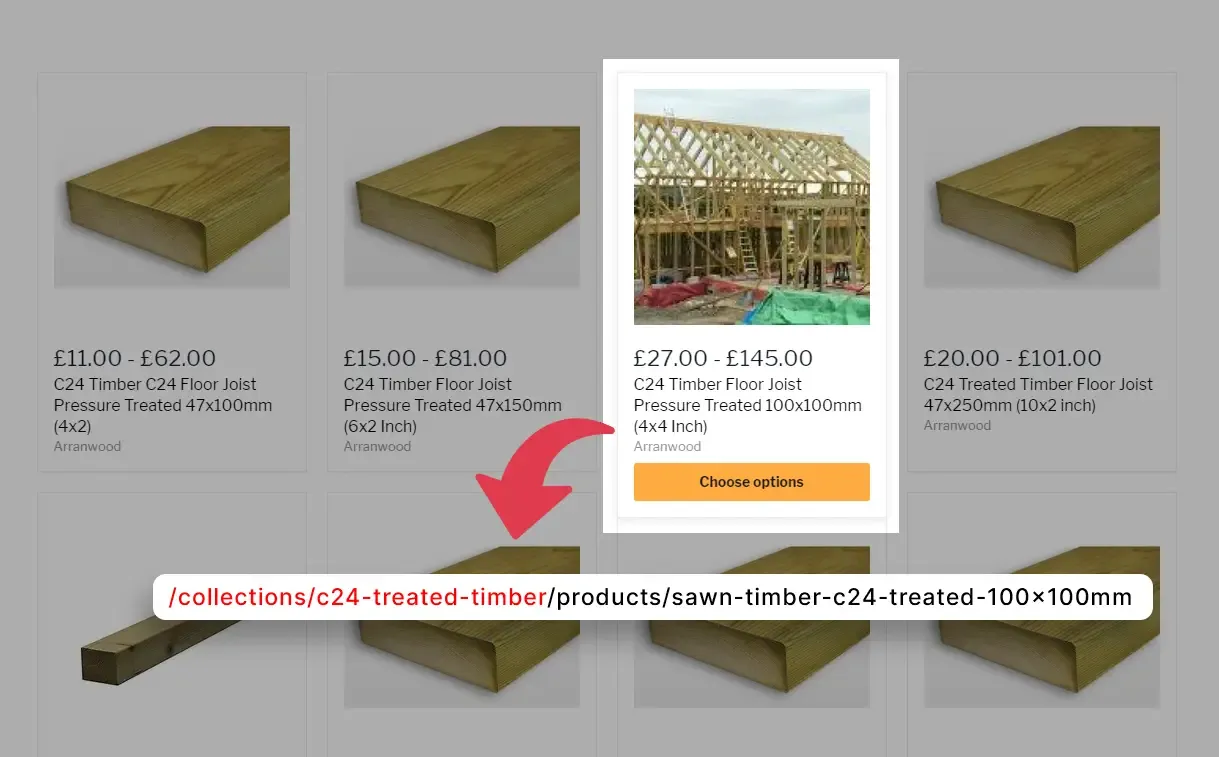
Every single one of these products were linked through a canonicalised (read: wrong) URL. It’s default Shopify behaviour and it causes a technical mess.
On top of this there were tag pages, vendor pages, and type pages adding up to several hundred automated low quality pages. There were 73 low-quality vendor collection pages like this one:
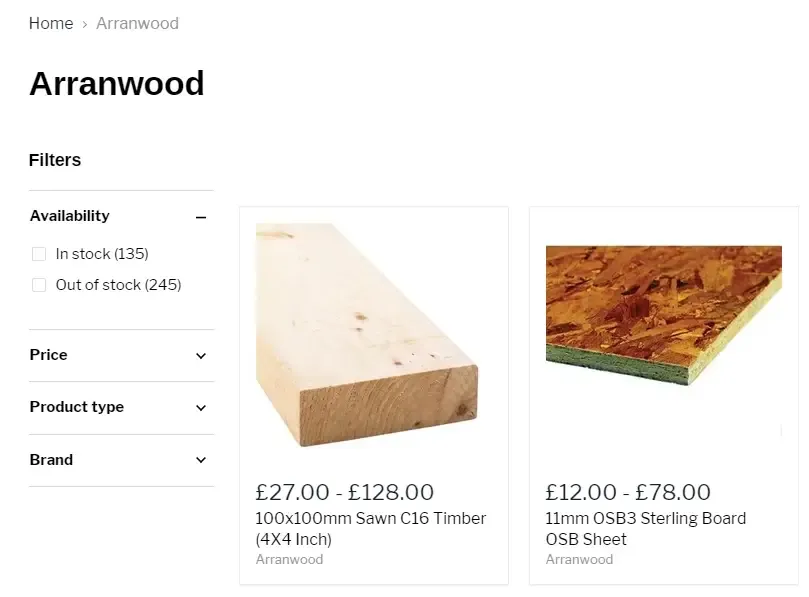
These links were removed where possible and noindexed to improve the overall site quality.
And there was a huge amount of pages that had literally zero traffic. We added up 367 products and 26 collections. These were all brought to the client, then mostly removed from the store or optimised if important.
There were also products that basically targeted the same keywords:

Barely anyone searches for “fakro ldk loft ladder”, never mind 8m x 60 x 120 or 3m x 60 x 120, this issue repeated across 66 products we were able to identify. Though, sometimes there were specific search volume e.g. timber had many searches for each size.
For cases like the Fakro loft ladder, we canonicalised these into a single page or in some cases had the client merge them into a single product, if it made sense for the end user.
The final two key changes we made were on the internal linking side:
- Breadcrumbs
- Collection linking
Based on the current site setup, the collections are mostly only accessible via navigation menu links.
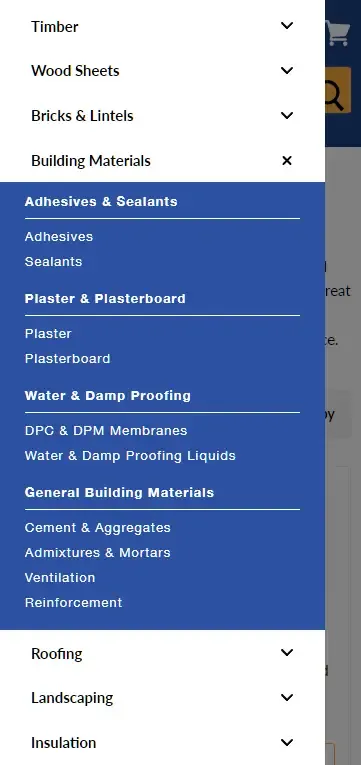
This seemed like a huge waste for a store with thousands of pages.
So first we built out a breadcrumb linking structure for each product (manually 😬), here’s how that looked:
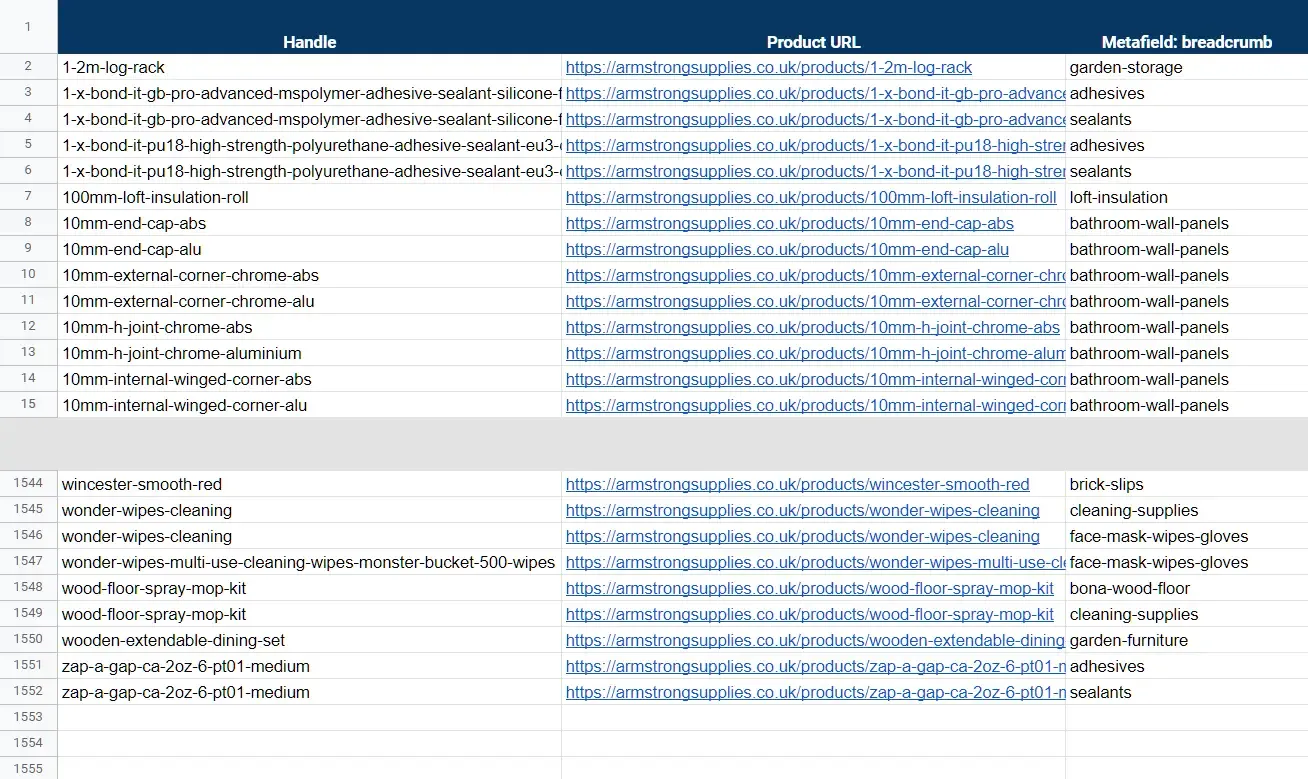
This added thousands of internal links back to collection pages, huge for SEO, but also user friendly.
Then we implemented links from collection pages to other relevant collections.
So if you’re in Treated C16 Timber Joists, it’ll offer other options like this:
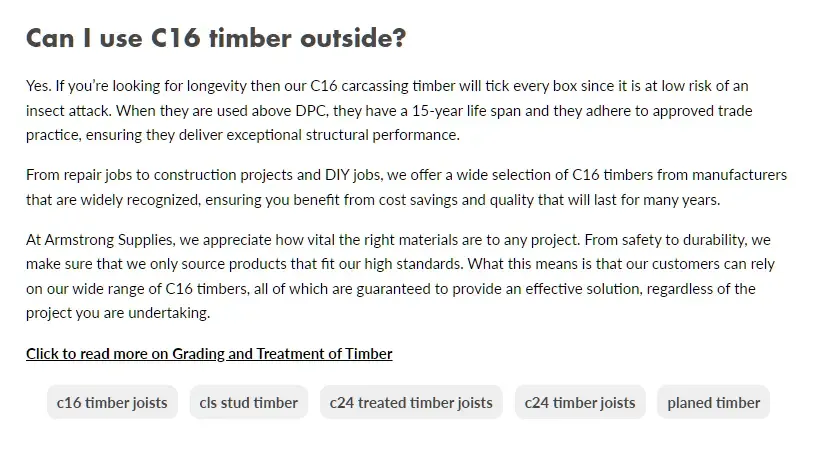
Now that’s some huge improvements, without even optimising specific pages. Is it any wonder the site almost immediately began skyrocketing?
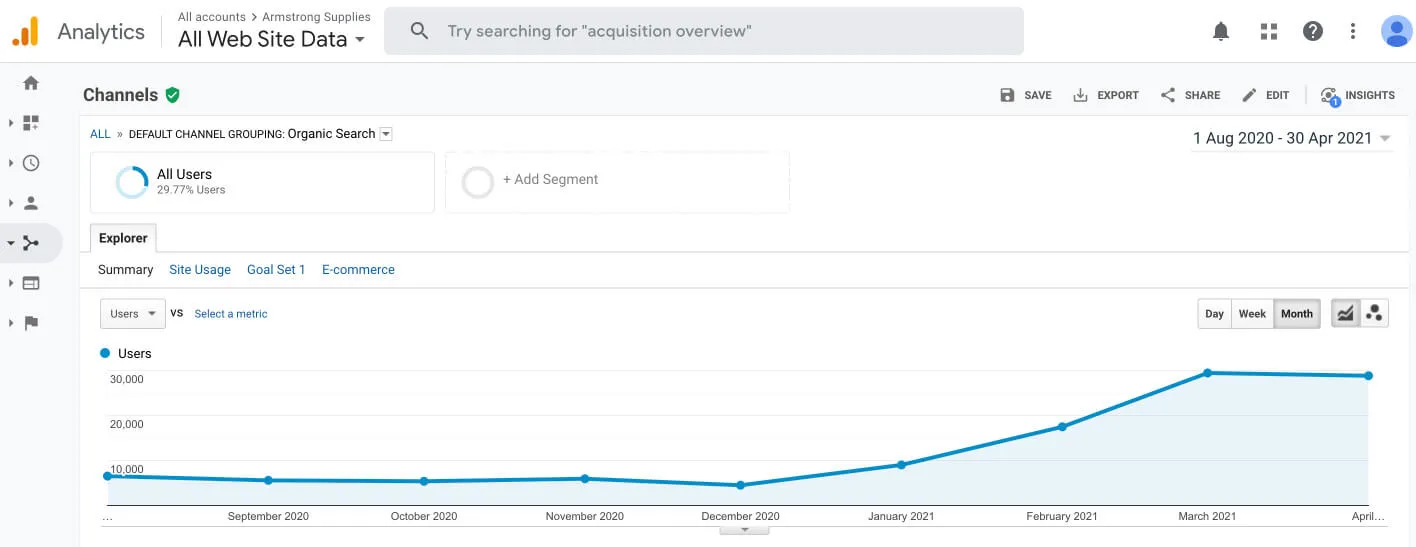
2. Expand Bottom of Funnel
Next it was time to leverage all these products to expand the traffic potential of the website.
Imagine you’re shopping online:
A certain number of people know exactly what they want, they know the brand name, the product name. They’re ready to buy.
But a larger group is like.. Umm.. I’d like a door 🚪.
Or maybe an internal door, folding door, hardwood door, etc.
You can see an example of that from Travis Perkins:
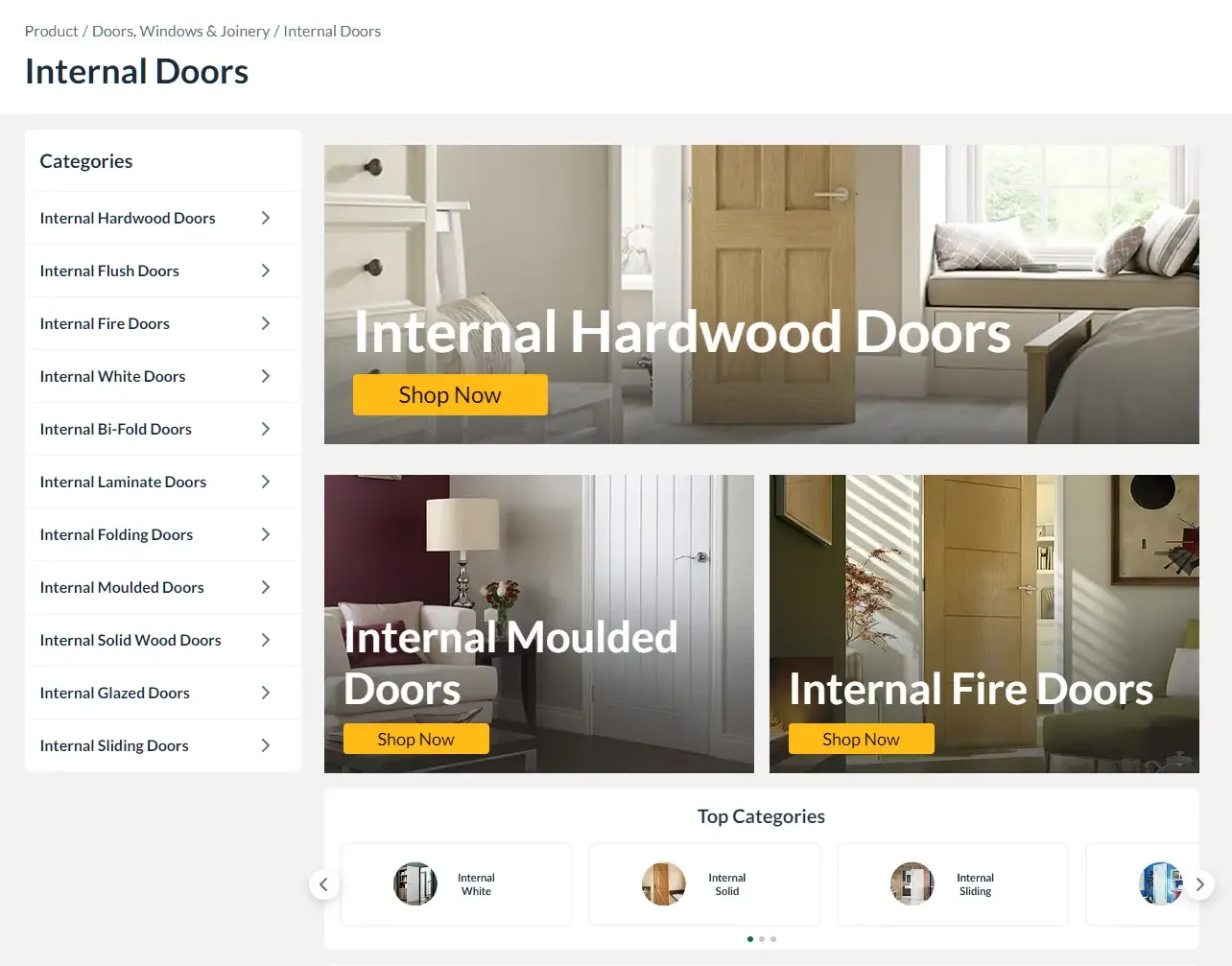
Well, Armstrong only had a doors collection. Nothing else.
Then repeat that across many other categories.
So we gave them a huge list of new collections to make. This instantly expands the search traffic potential by giving potential customers alternative entry paths for finding your products, no additional products needed.
3. Optimise Bottom of Funnel
The final and slowest phase is improving the bottom of funnel pages.
None of the collections had more than a sentence of content on them, most had absolutely none.
So we started by optimising each of the collection pages with new title tags, meta descriptions, and keyword focused H1s (collection names). Along with creating content briefs for the clients writers to follow.
We formatted this with a short persuasive description at the top:
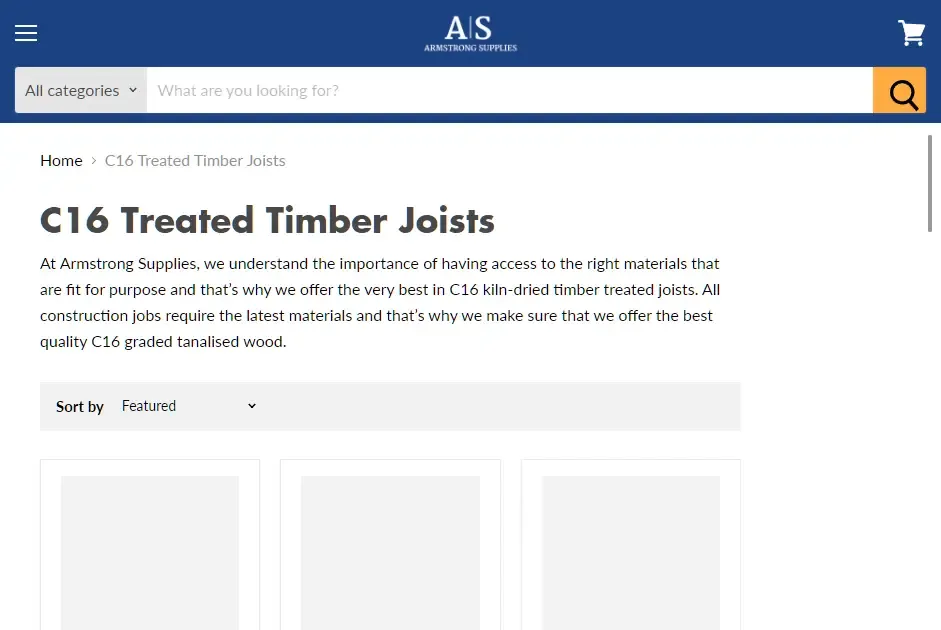
Followed by a longer, detailed description at the bottom:
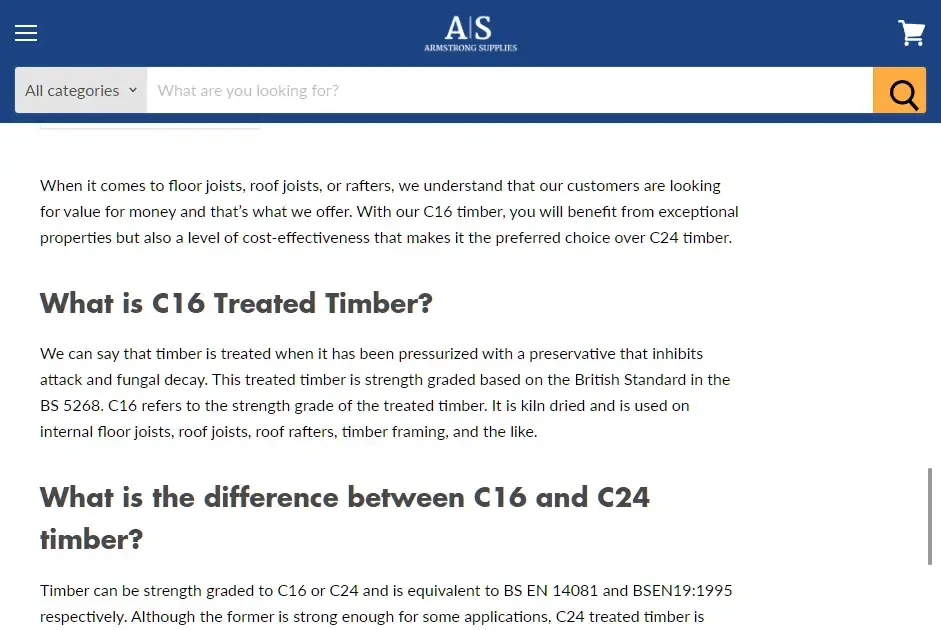
This allowed us to answer common buyer questions without ruining the shopping experience, especially on mobile.
Next we had to rewrite many of the product descriptions.
There were 43 we identified with 90% or higher duplicate content to other products. And many more that were complete copies of supplier descriptions, which is even worse.
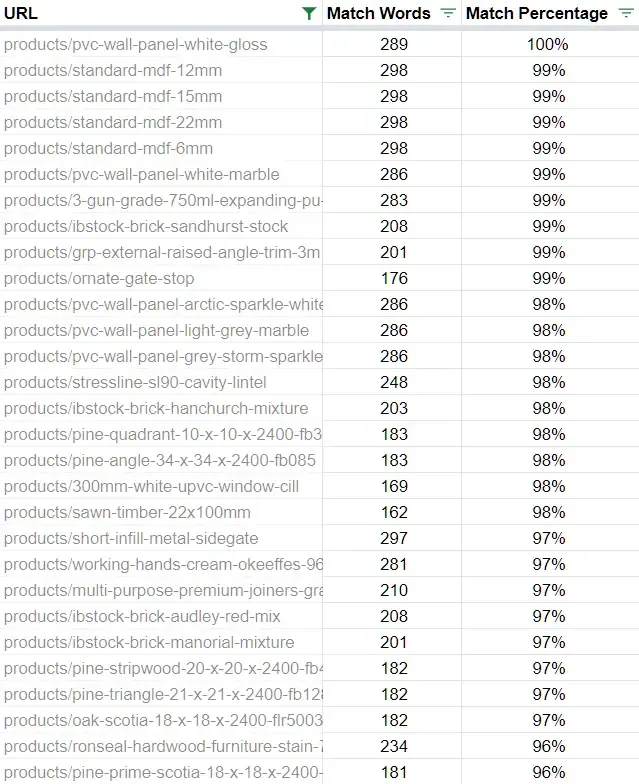
Armstrong had a few freelance writers, so we worked with them to do this, providing lists of products, templates, and keyword/optimisation recommendations to create it.
This may seem quite boring, but added up over thousands of products, this makes a huge difference to the overall site quality.
Also it’s near impossible to rank a product without a unique, informative description.
The Results
+24,318
Users
+495.42%
Website Revenue
+332.43%
Transactions
+737.50%
Assisted Conversions
+193
Top 3 Keywords
+589
Page 1 Keywords

